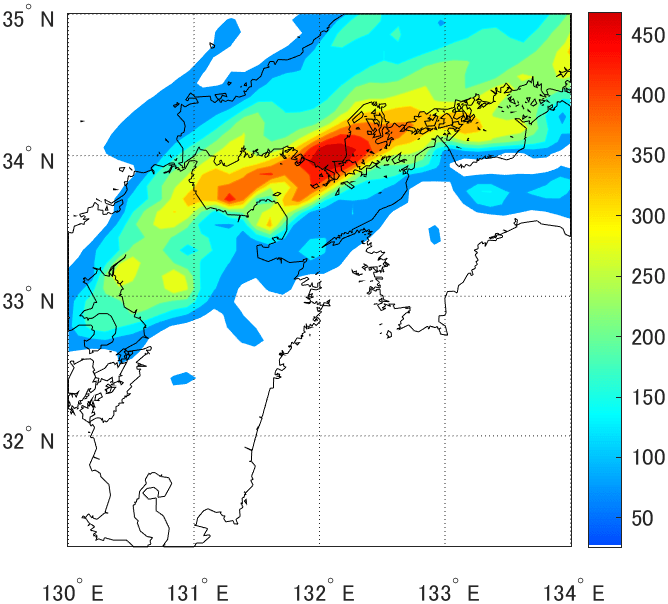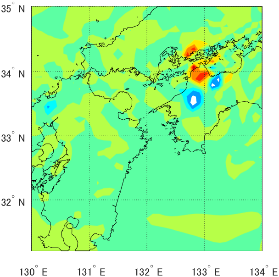Progress Report
Actuator Location Optimization for Large Degree-of-Freedom Fields[3] Construction of Evaluation Method for Optimized Actuator Placement on Weather Simulator
Progress until FY2024
1. Outline of the project
We will construct an evaluation technique of the effectiveness of input at optimized actuation locations on a realistic weather simulator. The weather fields to be modified and controlled in this project are those of extreme weather such as local heavy precipitation. The reproduction of such phenomena is not easy in simulations at the moment. Therefore, it is necessary to reliably reproduce extreme weather for evaluating the effects of inputs on a weather simulator first. In addition, since there are various numerical weather prediction models and each model has advantages and disadvantages, the selection of the numerical model is also important. In this theme, we will clarify various configurations such as cloud microphysics, the boundary conditions, the size of the computational domain, the grid resolution, etc. Then, the optimization method of actuator placement developed in other themes of our project will be applied to verify the effectiveness of the proposed method.
2. Outcome so far
We verified that an intervention with optimized actuator placement could change the amount of rainfall more significantly than an intervention with randomly placed actuators using a weather simulator. We are using the WRFPLUS model, which was developed mainly by the National Center for Atmospheric Research (NCAR) because the model includes the adjoint model required for efficient sensitivity analysis, and the optimization method of actuator placement developed in our project anticipates the use of the adjoint model.
Figure 1 shows the change in precipitation due to intervention in the heavy rains that occurred in western Japan in July 2018. The water vapor mixing ratio on the surface at eight locations was reduced at noon on July 5th, and simulations were conducted to confirm how the intervention would change the rainfall six hours later. A random placement and a placement determined using the developed method to produce a greater change in the amount of rainfall six hours later were used.


Figure 1: The distribution of change amount of the accumulated precipitation at six hours after intervention. The target event is heavy rains occurred in western Japan in July 2018. The amount of water vapor mixing ratio on the ground at eight locations was reduced by 10% at noon on July 5th.
When intervening at randomly selected locations, the change in the accumulated precipitation is approximately 1 mm in maximum, but when intervening at an optimized actuator locations, the change amount is approximately 10 mm in maximum.
Figure 2 shows the results of a statistical evaluation of the change amount of the accumulated precipitation for random placement and optimized placement. The vertical axis represents the probability density function, and the horizontal axis represents the amount of change in the accumulated precipitation in the whole target domain. Red bars show the results obtained with the optimized placement, and blue bars show the results obtained with the random placement. With optimized placement, the peak in the probability density distribution is located on the righthand side of the graph compared to that of the random selection, indicating that a large amount of change in the accumulated precipitation can be achieved with a high probability by using the optimized placement. This trend is the same whether the amount of reduction of the water vapor mixing ratio at the actuators is set to 1% or 10%. When reducing the amount of water vapor mixing ratio by 10% at the actuators, the difference between random placement and optimized placement becomes larger.


Figure 2: Probability density function of rainfall change obtained by optimized arrangement (red) and random placement (blue). The number of actuators was eight.
We have also developed a method to determine the input that will reduce the rainfall at the maximum precipitation area using the low-dimensional model.
3. Future plans
In the future, we will optimize the actuator placement for modifying extreme weather fields reproduced on a simulator in several different scenarios. Furthermore, we are developing an optimization method that can handle time series inputs, which is being developed in another theme of our project. Therefore, we will apply it to meteorological fields to verify whether greater control effects can be obtained. In addition, by investigating the mechanism by which meteorological fields change depending on inputs, it is expected that more effective intervention methods will be considered.